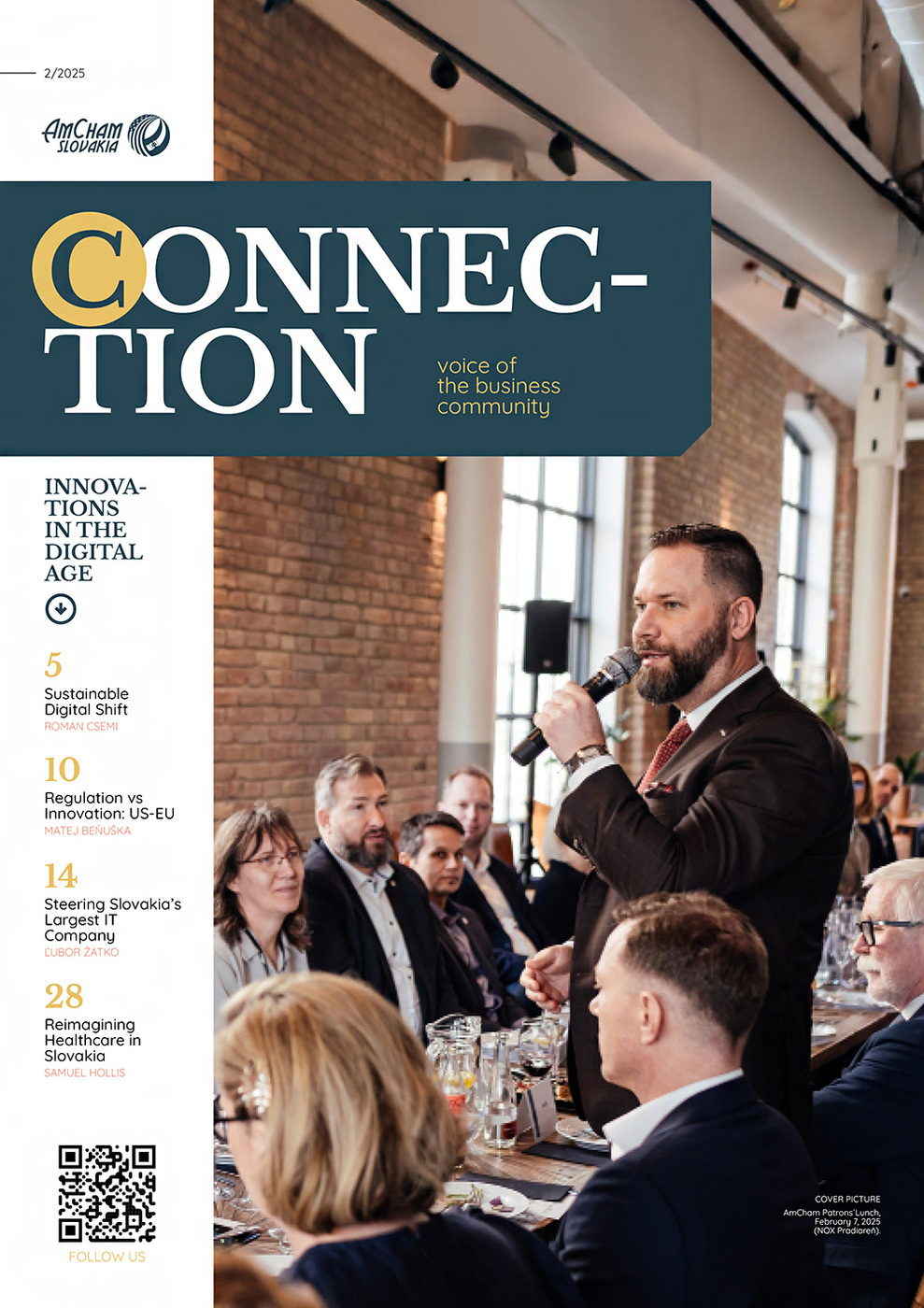What global trends will shape healthcare and biotech over the next 5–10 years?
Technological advancements are driving rapid changes in healthcare and biotech. Personalized medicine, using genetic data, enables more precise therapies. Gene editing tools like CRISPR offer potential cures for previously untreatable diseases. Early, non-invasive diagnostics, especially in oncology, are improving detection and treatment. AI is revolutionizing drug discovery, diagnostics, and healthcare management. There’s also a growing focus on prevention and healthy aging, reducing chronic disease burdens, while flexible outpatient care models are making quality healthcare more accessible.
Can Slovakia leverage its aging population to drive biotech growth?
An aging population brings challenges and opportunities, increasing demand for preventive care and chronic disease management. Personalized therapies for conditions like Alzheimer’s and cardiovascular diseases, along with digital health solutions like telemedicine and wearables, are improving care delivery. Specialized senior care services, advanced facilities, and home-care solutions are also evolving. By investing in these areas, Europe can lead healthcare innovation, with private capital crucial for scaling solutions.
What are Slovakia’s strengths in healthcare and biotech, and how can they attract international investment?
Slovakia benefits from a highly skilled workforce, a strong foundation in life sciences, and a rapidly growing digital health sector. To attract investment, collaboration between academia, government, and industry must be strengthened for efficient knowledge transfer and innovation. Regulatory frameworks should align with EU standards to simplify biotech development. Mobilizing private capital and encouraging investment in biotech startups will be key to fostering growth and global competitiveness.
What are the main barriers preventing Slovakia’s scientists from turning research into investable companies?
Despite strong research capabilities, several barriers hinder commercialization. Limited early-stage funding prevents projects from advancing beyond the initial phases. Weak connections between academia and industry slow the transition from research to real-world applications. Regulatory hurdles complicate commercialization, delaying or preventing market entry. Additionally, many scientists lack the entrepreneurial training needed to translate research into viable ventures. Addressing these challenges requires a stronger innovation ecosystem, better regulatory conditions, and mentorship programs that support scientists through the commercialization process.
How important is private capital in driving innovation in healthcare and biotech in regions like Slovakia, and how should it complement public funding?
Private capital is essential for accelerating healthcare and biotech innovation, particularly in regions where public funding alone is insufficient. Beyond financial support, private investors bring expertise, industry connections, and strategic guidance. While public funding plays a fundamental role in supporting early-stage research, private investment is critical for scaling innovations and bringing them to market. A balanced combination of public and private capital ensures long-term industry sustainability and fosters continued growth in the sector.
Can you share any success stories or lessons learned from Crowdberry’s experience in this sector?
Crowdberry has played a key role in driving private investment in Slovak and Czech healthcare and biotech, facilitating over €41 million in funding, €25 million from Crowdberry investors and managed investment funds. Notable investments include the specialized Senior and Alzheimer’s care facility Dúbravská Oáza, the modern outpatient healthcare provider Polyclinic Váš Lekár, and biotech companies like MultiplexDX and Glycanostics, which are pioneering innovative early and late-stage cancer diagnostics. The strong investor interest in Glycanostics highlights the potential of biotech startups.
How can we encourage long-term investment in healthcare startups, and build patience and stability in biotech investments?
Education and transparent communication help investors set realistic expectations about timelines and returns. Regular updates and key milestones build trust and confidence. Supporting firms through growth stages strengthens the investment ecosystem and ensures continued funding. Additionally, exit strategies like secondary transactions and buyouts improve liquidity and encourage sustained investment in the sector.
How can Slovakia strengthen partnerships between academia, the public sector, and industry in healthcare?
Implementing tax incentives and funding programs can encourage research-industry partnerships. Leveraging EU funds effectively will provide crucial financial support for biotech advancements. Establishing structured support for biomedical research will facilitate commercialization and accelerate the transition from lab discoveries to market applications. Additionally, attracting international investors through cross-border investment strategies will create a more dynamic and competitive ecosystem.
By addressing these key areas, Slovakia can build a thriving biotech sector, attract top talent, and secure its place in the global healthcare industry.
Michal Nešpor, Managing Partner, Crowdberry



Follow us